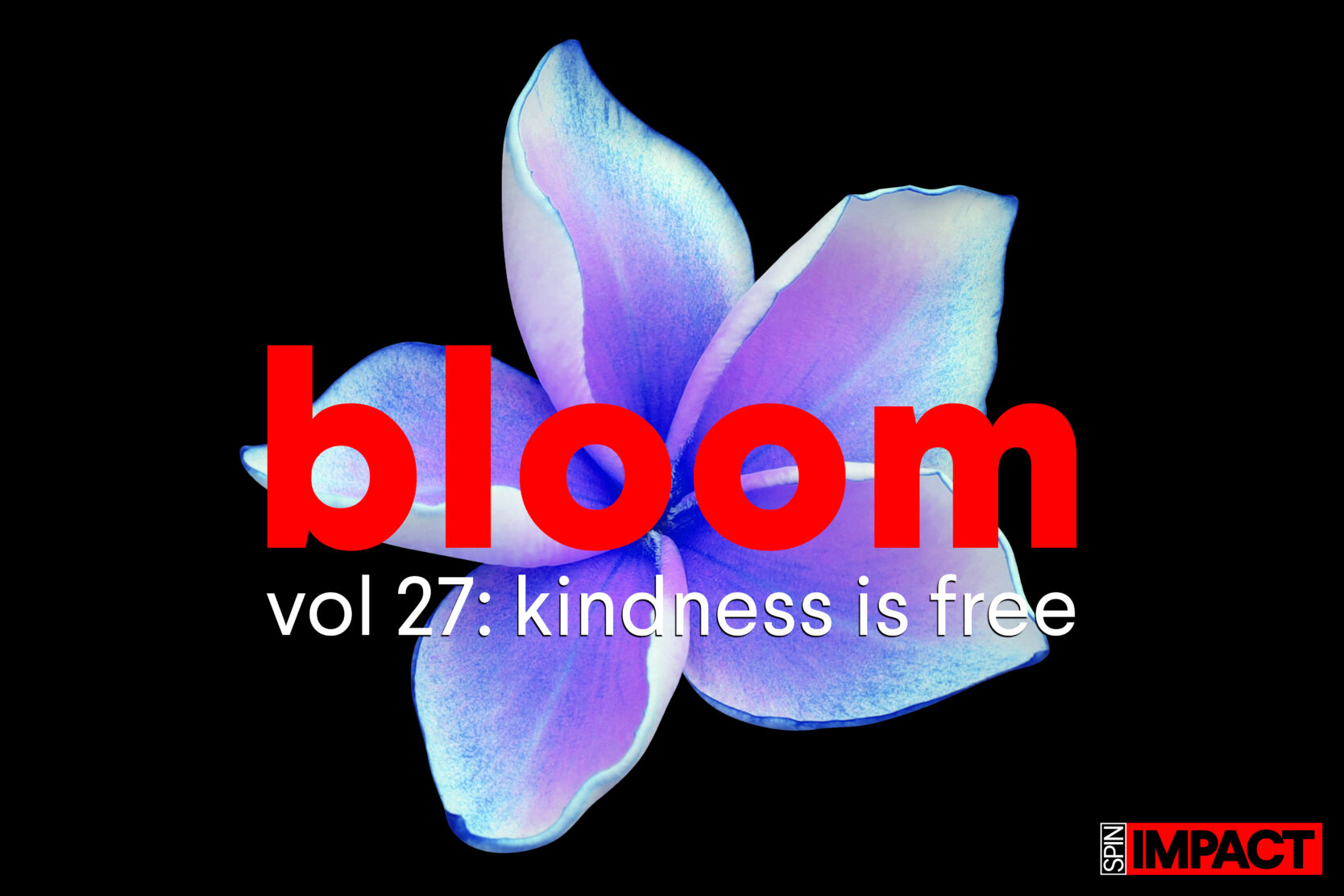Feedback hit the mic as I trailed in front of the speakers for a second, bowing my head and taking a breath before I uttered:
“I know what happens when the months get colder.”
I have fallen into the crevasse of suicidal ideation a couple of times. Once, with a plan, means, and timeframe, the other simply ideas of a mind that could not see a clearing.
September is Suicide Prevention Awareness Month, a month that looms heavy in the world of music and the arts.

Also Read
Bloom Vol. 28: More Than One
We’ve lost so many — Avicii, Kurt Cobain, Eliott Smith, Chris Cornell, it is a list that goes on far too long.
As we begin, here are some critical facts about Suicide from NAMI, with additional links for you to learn more.
As far as individual impact goes:
- 79% of all people who die by suicide are male.
- Although more women than men attempt suicide, men are 4x more likely to die by suicide.
- Suicide is the 2nd leading cause of death among people aged 10-14 and the 3rd leading cause of death among people aged 15-24 in the U.S.
- Suicide is the 12th leading cause of death overall in the U.S.
- 46% of people who die by suicide had a diagnosed mental health condition — but research shows that 90% may have experienced symptoms of a mental health condition.
A look at the community impact shows the annual prevalence of severe thoughts of suicide by U.S. demographic group:
- 4.9% of all adults
- 11.3% of young adults aged 18-25
- 18.8% of high school students
- 45% of LGBTQ youth
- The highest rates of suicide in the U.S. are among American Indian/Alaska Natives, followed by non-Hispanic whites.
- Lesbian, gay, and bisexual youth are nearly 4x more likely to attempt suicide than straight youth.
- Transgender adults are nearly 9x more likely to attempt suicide than the general population.
Coming into a period of suicidality is like rock climbing. You’re sliding down with stones slashing skin, dust kicking up into the eyes, and rope burn like a branded cow at high noon, widening the eyes.
You think you’d gain a little bit of ground, but boulders would descend upon you and press you tightly against a rock and a hard place.
We feel so isolated we forget to scream.
We only seem to find disparaging words to mutter under our breath instead:
Helpless.
Inferior.
Worthless.
We are persecuted by our inability, paralyzed by fear.
The lowest time when suicidal ideation begins to slip is entropy — loss of information of joy and the intimate free moments where we feel valued, respected, and proud.
You are opening a water bottle, gasping to end your thirst and find a pebble from above.
Taking accountability for my life helped me find my bearings and begin to climb the wall again.
I was sick and tired of feeling sick and tired. Over one year, I did the following:
I stopped drinking alcohol.
I stopped using nicotine.
I improved my diet and began exercising multiple times a week.
I changed my sleeping habits.
I’d see my therapist twice a month (eventually, weekly).
I talked to all of my treatment team, my friends, and all of those I could trust.
I shook up my environment, taking several trips to sunnier climes. I thought that would change me. It was a maladaptive mindset to consider moving back to sunnier climates would fix everything for me.
While doing all of the above, I slid into the deepest parts of suicidal ideation — something was missing.
I still wasn’t creating any feeling of self-love or self-worth.
It can look like everything is going well on the surface. If you glanced at the “happenings” around that time, you would’ve thought I was healthy and charging toward all my goals.
I was talking to friends about how I was feeling, but I never fully admitted to them that I would rather be dead than alive.
In my fantasies, I was okay — I was great. In reality, I was losing hope.
So what changed it?
I used to externally blame just about everything for where I was.
I had just enough energy to continue a front I had developed. I’d lay in bed for several months and watch TV all weekend. I’d stare at a wall for hours, criticizing all of these outside forces for conspiring against me.
I got so sick and tired of being exhausted.
How exhausting to live a life dictated by past trauma and constantly seek things outside yourself to feel okay.
If you have the privilege of living outside of a state of survival, would you settle with this voluntary fatigue?
I had to have a reason for being alive, looking myself dead in the eyes and saying, “I am upset right now because I have let myself down.”
I had to throw my hands up on allowing my past to continually dictate my present. Where did all of these fear and feelings of nothingness come from? I was writing a book with ink from my former self.
Recovery starts with a willingness and determination to change.
My recovery, in the end, wasn’t from drinking, or nicotine, or any of those things — I had to recover from a state of self-defined worthlessness.
I had to learn how to love myself again.
The passion to live a better life is the strongest medicine of all, for we are all worth it. We are all worth love, and all have something amazing to offer to the world.
With this newfound desire to thrive, it changed my intention behind everything. I was no longer doing things just to go through the motions – every morning and every day I pushed for my life literally depended upon it.
Within four to six weeks, I completely snapped out of the suicidal thought track, and into the best months of my life.
I was reading books on emotional intelligence. I began learning new workshops, tips, and techniques that helped me get in touch with myself.
My meditations became filled with affirmations — “you are worth it.”
Through some rigorous therapy, more directed and honest, I was able to start speaking to my inner child, the one who used to enjoy life, and pull from him sparks of gratitude for his journey.
I started to play video games again. I started to laugh more.
I got back, step by step.
I created goals that were far more attainable to obtain in life, like, stretching for 15 minutes each morning – me loving my body, and taking care of it, little events like this started brightening my day.
My language became gentle with myself, encouraging, leveraging new inner-dialogue techniques that didn’t tear me down.
I understand my story is not representative of all, and I do not want my personal account to strip the pains and the legitimacy of how difficult it can be when in a state of suicidal thinking to get better.
I merely share where I went once to say that it is possible to regain a sense of self-worth, it just might not be the first place you look — so I can only hope you continue trying, and attempt every single option possible before killing yourself.
If you are considering suicide, I wanted to share some resources that are there for you no matter what.
Recently, across the United States, the rollout of 988 has begun. 988 is a phone number you can call at any time, any day, and someone on the other side will be there to talk to you during a moment of crisis or suicidal contemplation and bring you to a place of calm – to help you.
You can chat with the team at 988lifeline.org/chat.
There are also resources like Crisis Text Line — you can text “home” to 741741 anytime and be connected to a Crisis Counselor who will write to you and stay with you when you need someone to listen to.
It isn’t just up to folks like me to discover that willingness to change. We need everything, we need allies, for many of us might not have the words to say where we are at.
Here are some signs of suicidal thinking you can look out for in someone from the NIH:
Talking about:
- Wanting to die
- Great guilt or shame
- Being a burden to others
Feeling:
- Empty, hopeless, trapped, or having no reason to live
- Extremely sad, more anxious, agitated, or full of rage
- Unbearable emotional or physical pain
Changing behavior, such as:
- Making a plan or researching ways to die
- Withdrawing from friends, saying goodbye, giving away important items, or making a will
- Taking dangerous risks such as driving extremely fast
- Displaying extreme mood swings
- Eating or sleeping more or less
- Using drugs or alcohol more often
If someone is exhibiting any of these signs, listen to them. Offer to be there for them. Ask them how you can help.
The responsibility falls to all of us in the scenario of suicide.
It falls to those like me to want to live.
It is the responsibility of friends to pay attention to one another.
It’s the responsibility of communities to make more safe spaces for people to navigate their emotions and find states of calm.
Our country must provide better mental health services and education.
Many people are living in horrible conditions across the globe, in states of pure survivalism, who do not have access to many of the things I have been able to tap into.
Let us be good neighbors to one another.
I saved myself when I began to approach myself from a position of love.
When I became real with where I was at and built a framework for meaningful behavioral change.
Be honest with yourself; be kind to yourself in the process.
Kindness is Free.
About the Author

A dance music producer, singer, and songwriter, Alex Wagner’s production career includes releases on Atlantic Records, Big Beat Records, and more.
As a crisis counselor for Crisis Text Line and certified peer counselor with the state of Washington, he has organized multiple mental health awareness events called “Grooving for Good” leveraging the power of music and the arts. He currently resides in Seattle, Washington. You can follow him on Instagram at @asinglewave.




